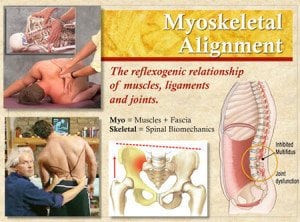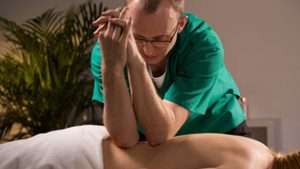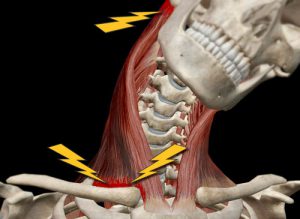Most manual therapists know how frustrating it feels to see a regular client who needs help with ongoing pain, only to realize, after several sessions, that the hands-on work you’re doing does not seem to be decreasing the client’s pain in any lasting way. This may happen even when you know exactly what is causing the client’s physical issues. More often, it occurs when the source of the trouble is more of a mystery. Fortunately, practitioners can learn the skeletal alignment skills and assessment protocols inherent to Myoskeletal Alignment Techniques (MAT), and their clients can begin to enjoy less pain — and more enduring results.

One of the key reasons MAT is such a well-respected method for the management, reduction and elimination of pain is because this massage method brings a blend of both skeletal alignment and muscular balance.
Professional massage therapists and bodyworkers are typically trained to work on the body’s muscles in order to alleviate tension and restore optimal function. While this usually results in wonderful short-term results, and sometimes lasting change, methods of massage that lean more toward the basic relaxation model do not tend to deliver significant results when it comes to client issues such as chronic pain or dysfunctional daily posture and movement. One of the key reasons MAT is such a well-respected method for the management, reduction and elimination of pain is because this massage method brings a blend of both skeletal alignment and muscular balance.
The greater effect that comes from not only addressing your client’s muscles, but also combining muscle-balancing techniques with joint-mobilization maneuvers is what gives MAT its powerful ability to quickly identify and correct neurologically driven strain patterns before they develop into full-blown pain patterns. By enhancing the skeletal alignment of each client, MAT increases the chance that the body’s muscles will continue to function in a more optimal manner as well — because they are not being pushed and pulled in unhealthy ways as frequently and extremely once the underlying dysfunctional alignment begins to be addressed.
The ability to bring these kinds of powerful pain-management skills to the table is one of the main reasons MAT stands out among other modalities. While remaining firmly within the scope of practice for massage therapy and other forms of manual therapy, MAT allows practitioners to provide clients with the kind of results they may have been seeking far and wide for a long period of time. As a major added bonus, MAT can deliver this relief from pain often without the need for prescription painkillers or surgery — two common treatments people in pain may turn to when their quality of life has been affected by these issues for too long.
Such fantastic results and the ability to decrease and manage pain in a natural manner are two of the biggest selling points for MAT practitioners, and these two selling points frequently allow manual therapists who become skilled in this modality to increase their salary as a massage therapist. The bottom line is that people who have been in pain for any length of time, and particularly those who have suffered for long periods with chronic pain conditions, are more than willing to pay the person who can provide a lasting solution, especially when that solution comes without scary potential side effects. Even the ability to help a client reduce the amount of pain medication he or she is taking or make a speedier recovery from surgery can be among the list of MAT benefits.
Therefore, if you are wondering how to increase your salary as a massage therapist, moving your career from the relaxation model of massage to the practice of hands-on pain management can be the perfect path to a better-paying career. The income boost that tends to come from practicing MAT not only stems from the willingness of clients to pay for those services that can actually relieve their pain, but also from the fact that such clients usually spread the word about an effective practitioner. In addition, more income can be connected to a related rise in referrals, as well as the ability to land a wider variety of more lucrative positions if you choose to work for a larger organization, such as an athletic facility or medical clinic.
To attain the skills you need to begin achieving greater client results and greater personal success, check out Erik Dalton’s current catalog of online, home-study and in-person continuing education classes.
On sale this week only!
Save 25% off the "Dalton Technique Treasures" eCourse
The “Dalton Technique Treasures” eLearning course is a compilation of some of Erik’s favorite Myoskeletal Alignment Techniques (MAT). Learn MAT techniques to assess and address specific sports injuries, structural misalignment, nervous system overload, and overuse conditions. ON SALE UNTIL July 29th! Get Lifetime Access: As in all our eLearning courses, you get easy access to the course online and there is no expiry date.







